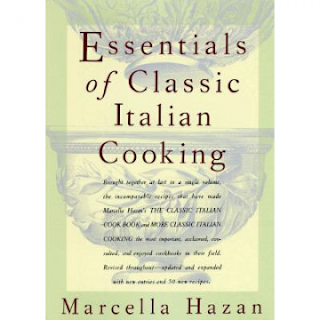Tomato Ginger Salmon
Tomato Ginger Salmon
This recipe is from my grandmother, Jean Darling. Granny originally made it on the grill. She'd buy a whole side of salmon and place it in heavy duty aluminum foil, put the tomato, ginger and garlic sauce on top of the salmon, then close the foil on top of the fish. She would then place the salmon in its foil package on the grill and closed the grill lid. It was always delicious and was one of her signature recipes.
Later, when I worked in a restaurant that was known for making excellent fish, I learned the technique of searing the salmon on a very hot griddle. The higher the heat, the juicer and more delicious the salmon will be. If you cook it low and slow, the result will be tough dry fish. I learned this the hard way when a friend considerately turned down the grill for me when I was interrupted by phone call. By the time I put the salmon on the grill I noticed it wasn't cooking correctly. It wasn't searing properly because the heat was low. The taste difference was enormous. It tasted nothing like the salmon I usually make. So just remember that high heat and fish are a winning combination.
You can use a cast-iron pan, a sauté pan, a grill or a griddle. One of my friends, puts a whole side of salmon on a half-sheet tray and puts in under the broiler. All of these techniques work because they use high heat.
The other very significant tip is that you must oil and salt the actual fish versus putting the oil in the pan. Rub olive oil on both sides of the fish and then generously salt both sides with kosher salt.
See my notes below for cutting salmon so it will cook evenly.
TOMATO GINGER SALMON
Serves 6
for the tomato ginger sauce:
3 tablespoons olive oil
3 tablespoons minced fresh ginger
2 teaspoons minced garlic
3 cups grape tomatoes, cut in half lengthwise (cherry tomatoes can be substituted)
1 tablespoon sugar or honey
1/2 teaspoon kosher salt
pinch of red pepper flakes (more to taste if you like extra spicy sauce)
for the salmon:
2 to 2 1/2 pound side of salmon, cut into approximately 4-ounce square pieces
1/4 cup olive oil
2 teaspoons kosher salt
Make the sauce: Use the largest skillet or frying pan you have. Heat the pan to medium high heat. Add the olive oil and ginger and cook for one minute. Reduce the heat to medium and add the garlic and sauté for another minute, stirring occasionally. Be careful not to burn the garlic or it will make the entire sauce bitter. (If you accidentally burn the garlic toss the whole thing out and start over.)
Add the tomatoes and turn the heat back up to medium high. Add the sugar or honey, kosher salt and red pepper flakes stir all to combine. Cook for about five minutes and then turn the heat off while you cook prepare your salmon. (The sauce can be made a day or two in advance.) Turn the sauce back on to low heat just before you sear the salmon.
Make the salmon: Rub salmon on both sides with olive oil and generously sprinkle both sides with kosher salt. (Some salt falls off in the pan or griddle, so you need a little more salt than you might think.)
Heat a griddle, cast-iron skillet, sauté pan or grill to high heat.
The thickness of the salmon will determine how long you need to cook it so make adjustments to the size of your fish. Sear the fish for 2-4 minutes until the fish turns a crispy and beautiful golden brown. Then flip it over and cook for another few minutes until that side is crispy. Depending on your taste preference, cook the salmon to medium or medium-well but remember that the fish will continue to cook after your remove it from the heat so be cautious not to overcook it.
Maili Halme
Notes on cutting salmon: I realize a photo is worth a thousand words so as soon as I can get fish cutting photos up I will. Until then, I will try to describe it.
Many people and grocery stores mistakingly the salmon into strips. This doesn't work because one part of the fish is very thick and the other part very thin and so the fish cooks unevenly.
Instead, cut the fish down the middle of the entire length of the fish. On the thicker side, cut the fish into squares. On the thinner side cut the fish into rectangles. The goal is having pieces of fish that are of a relatively even thickness.



Comments